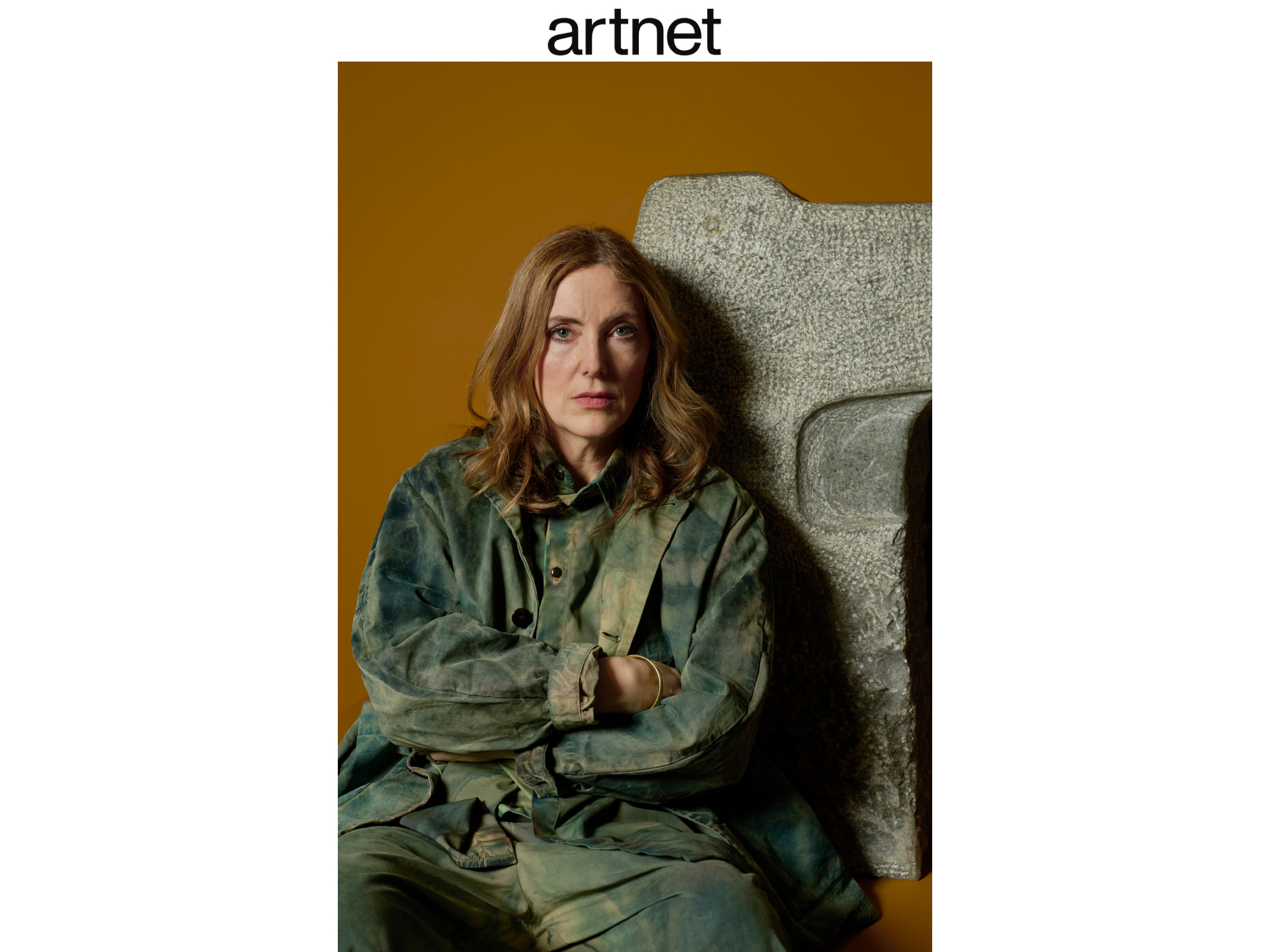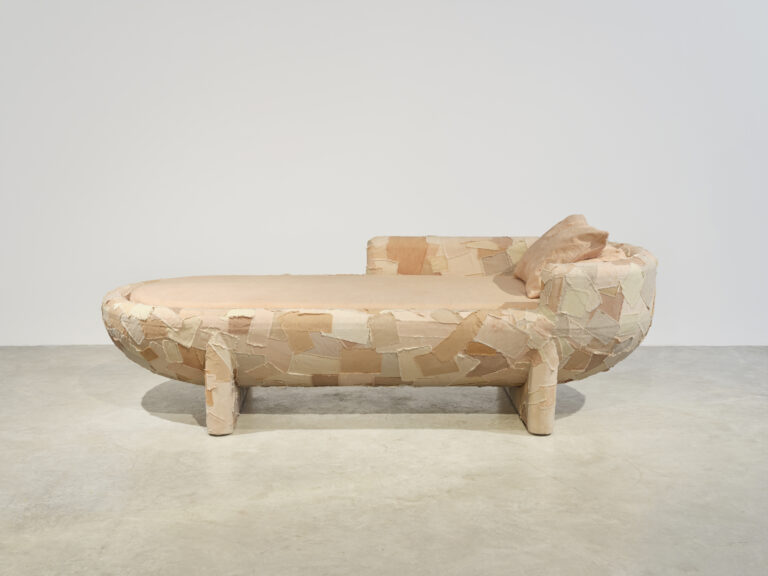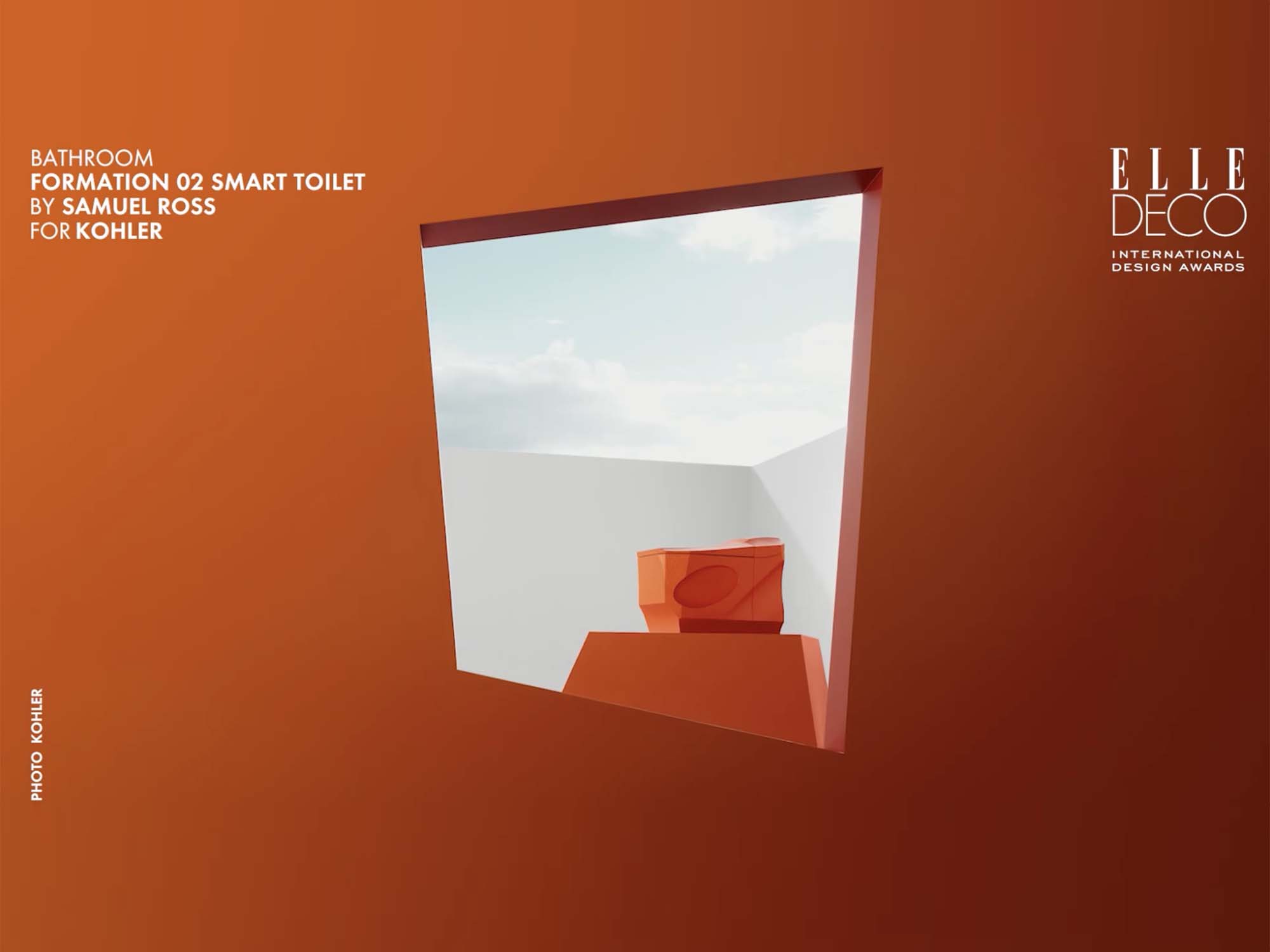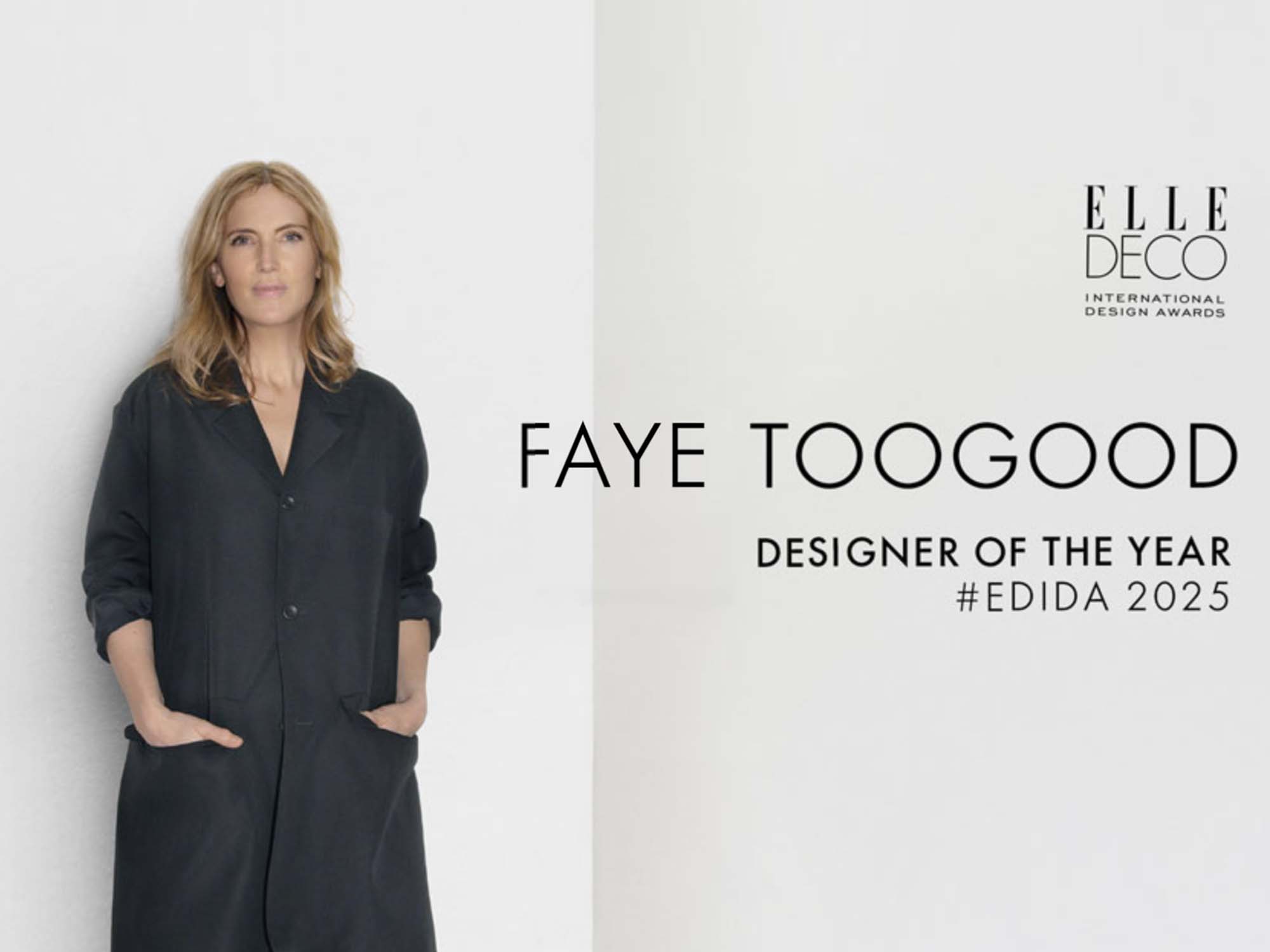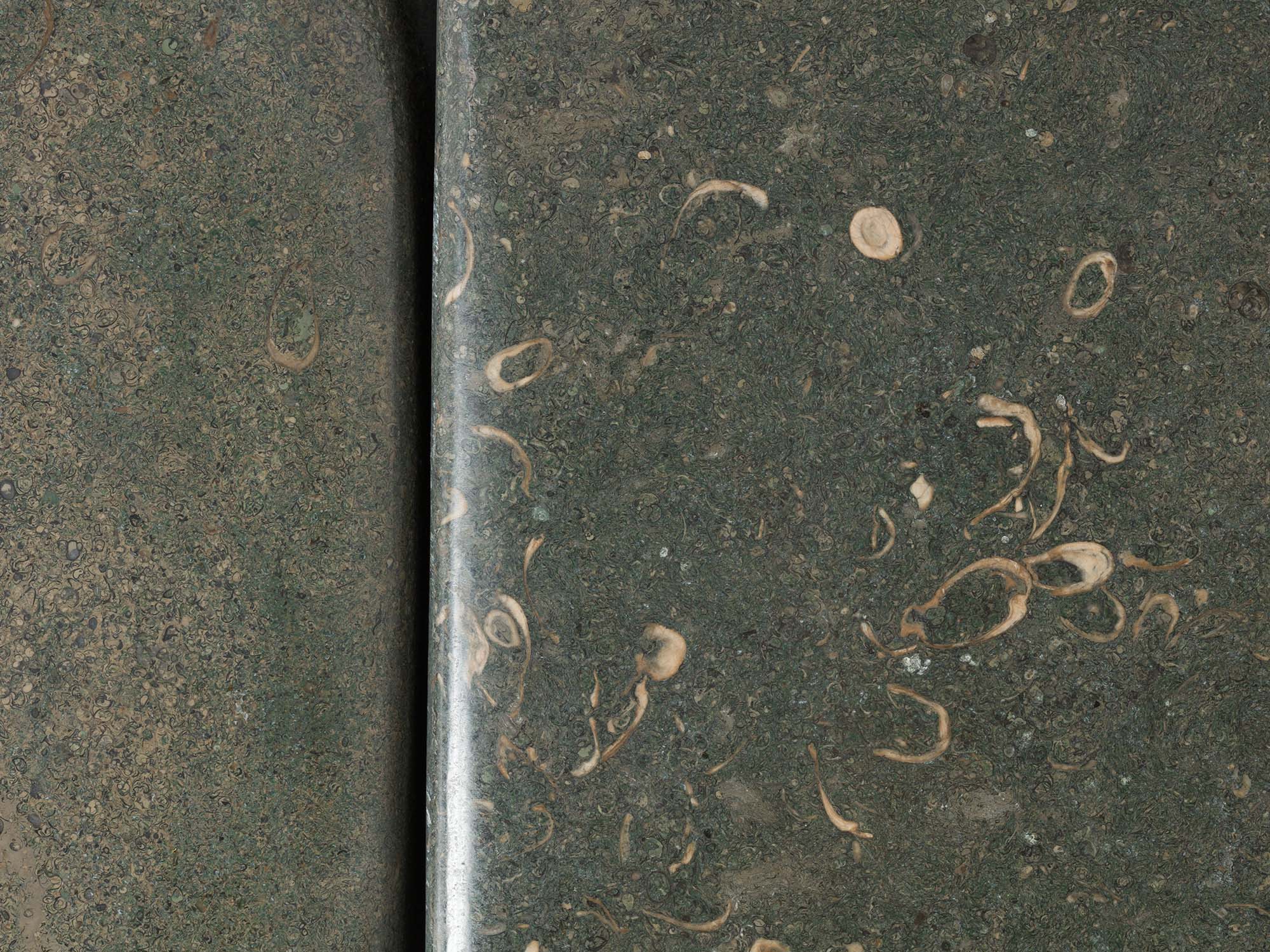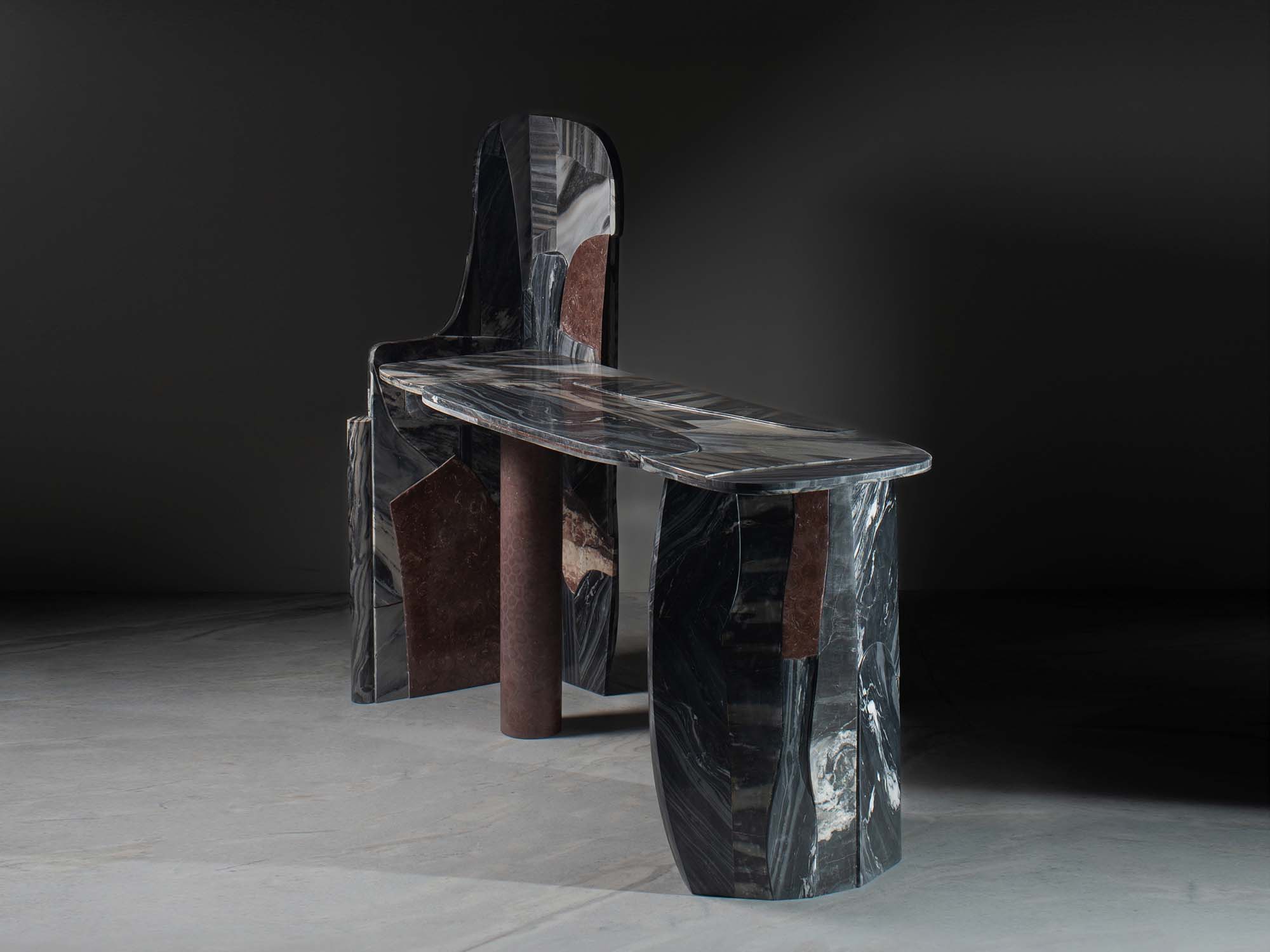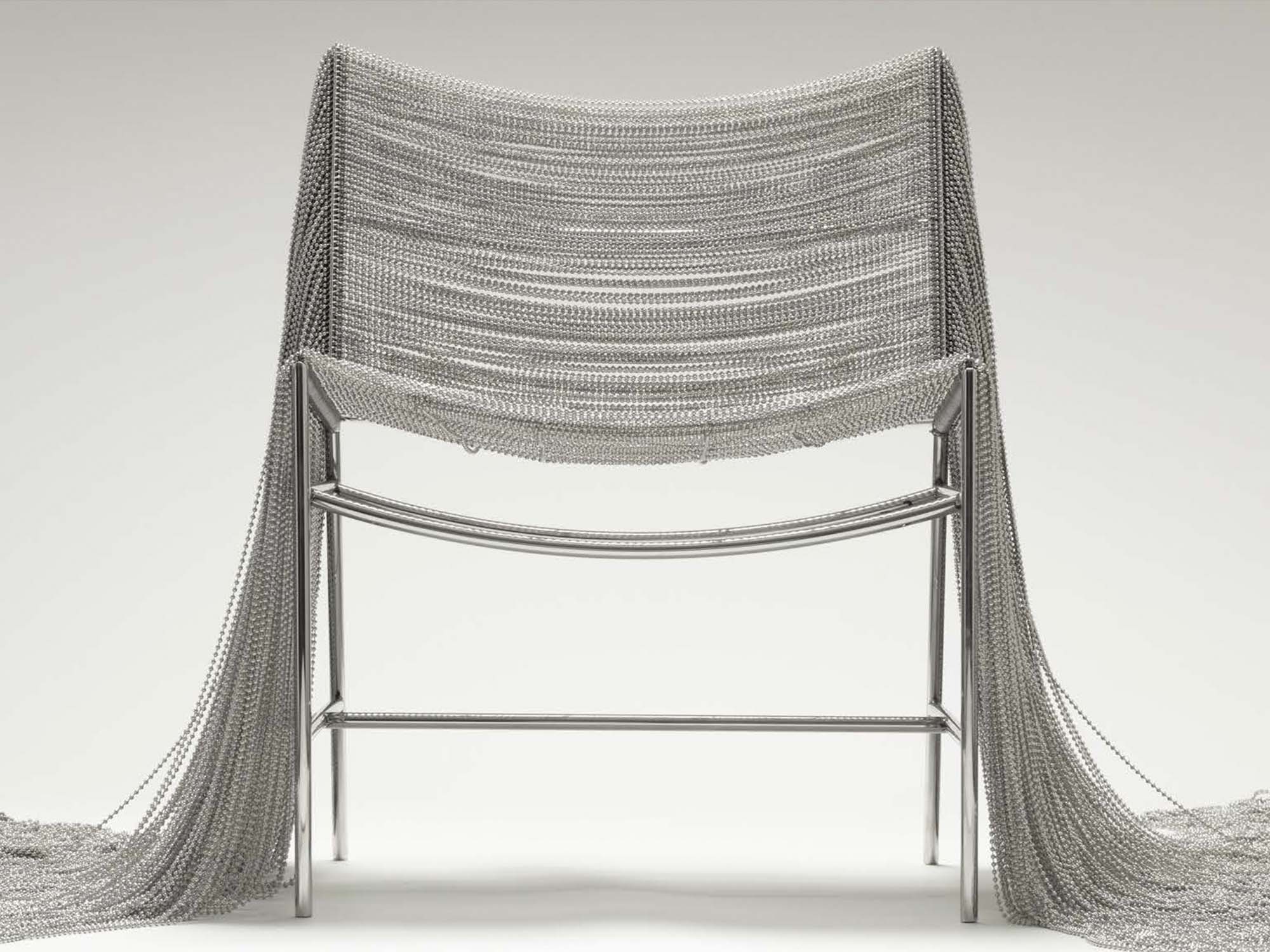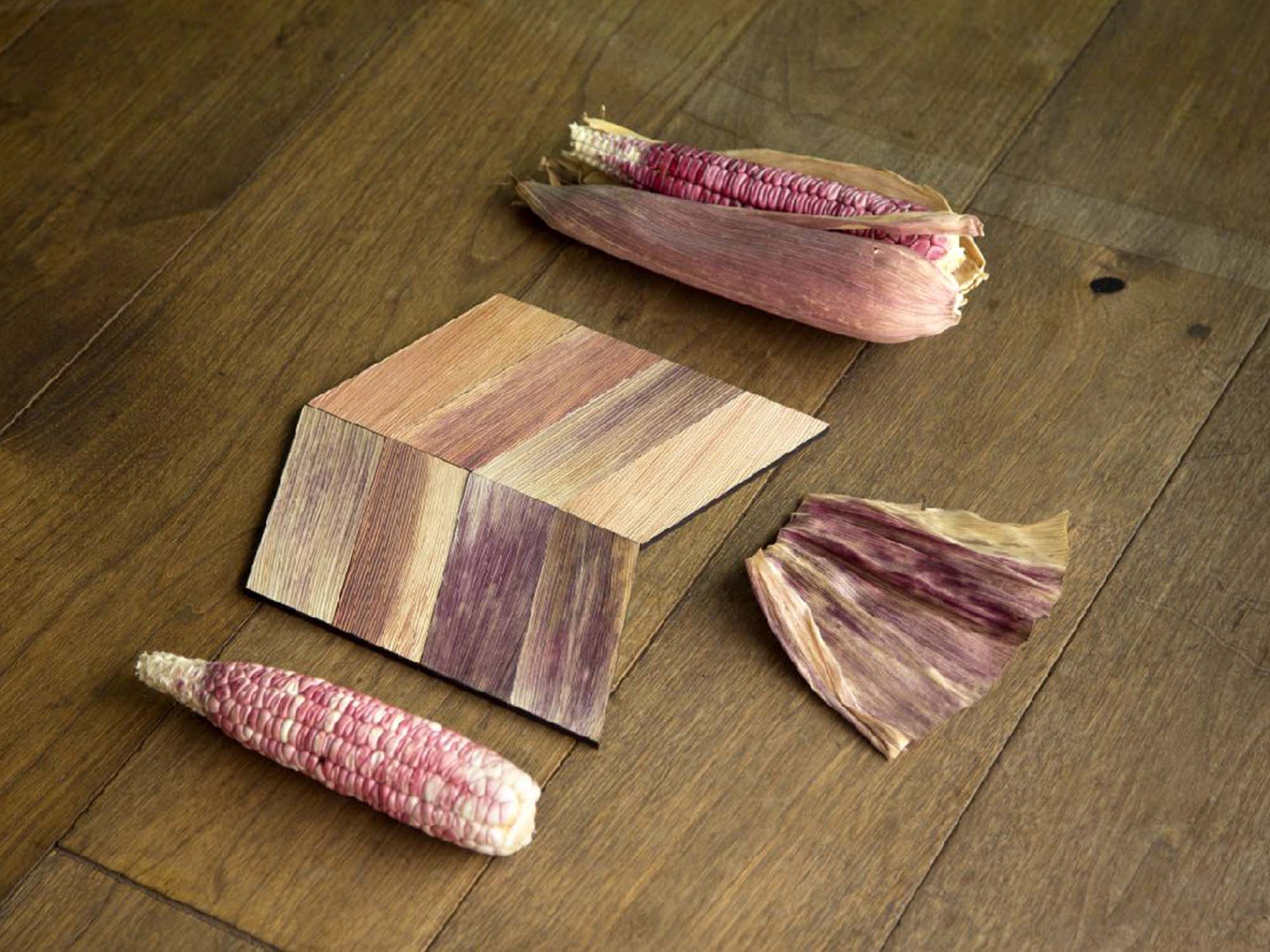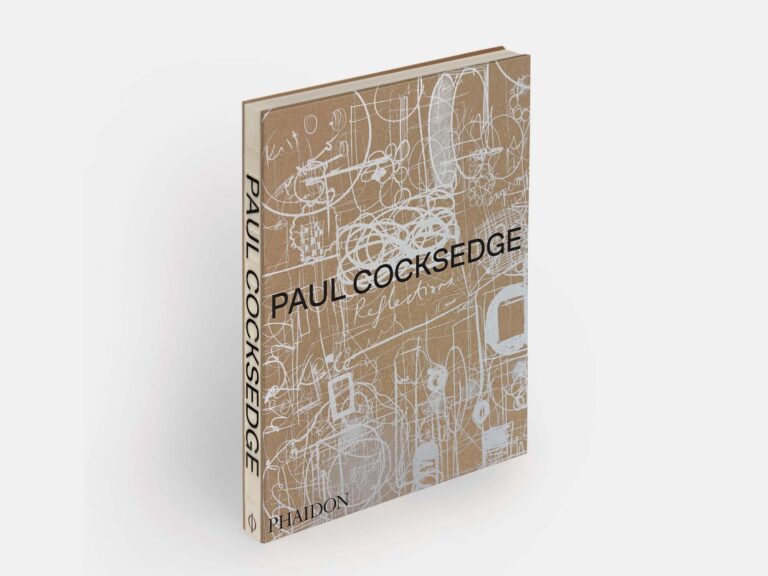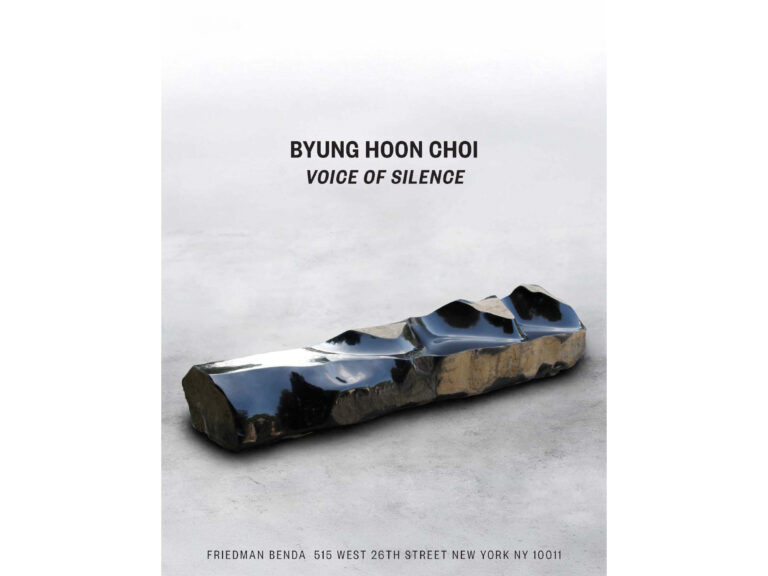In her striking New York exhibition, the British designer delves into timeless themes, blending historical echoes with contemporary design.
By William Van Meter
Despite it only being January, the British multidisciplinary designer and artist Faye Toogood has already had a gangbusters year. She just opened a solo show at the influential New York design gallery Friedman Benda. Meanwhile, the Paris-based furniture and design fair Maison & Objet, where Toogood was featured as the “Designer of the Year 2025,” wrapped yesterday. She showcased a multi-room solo presentation dubbed “Womanifesto!” Both diverse projects were deeply personal.
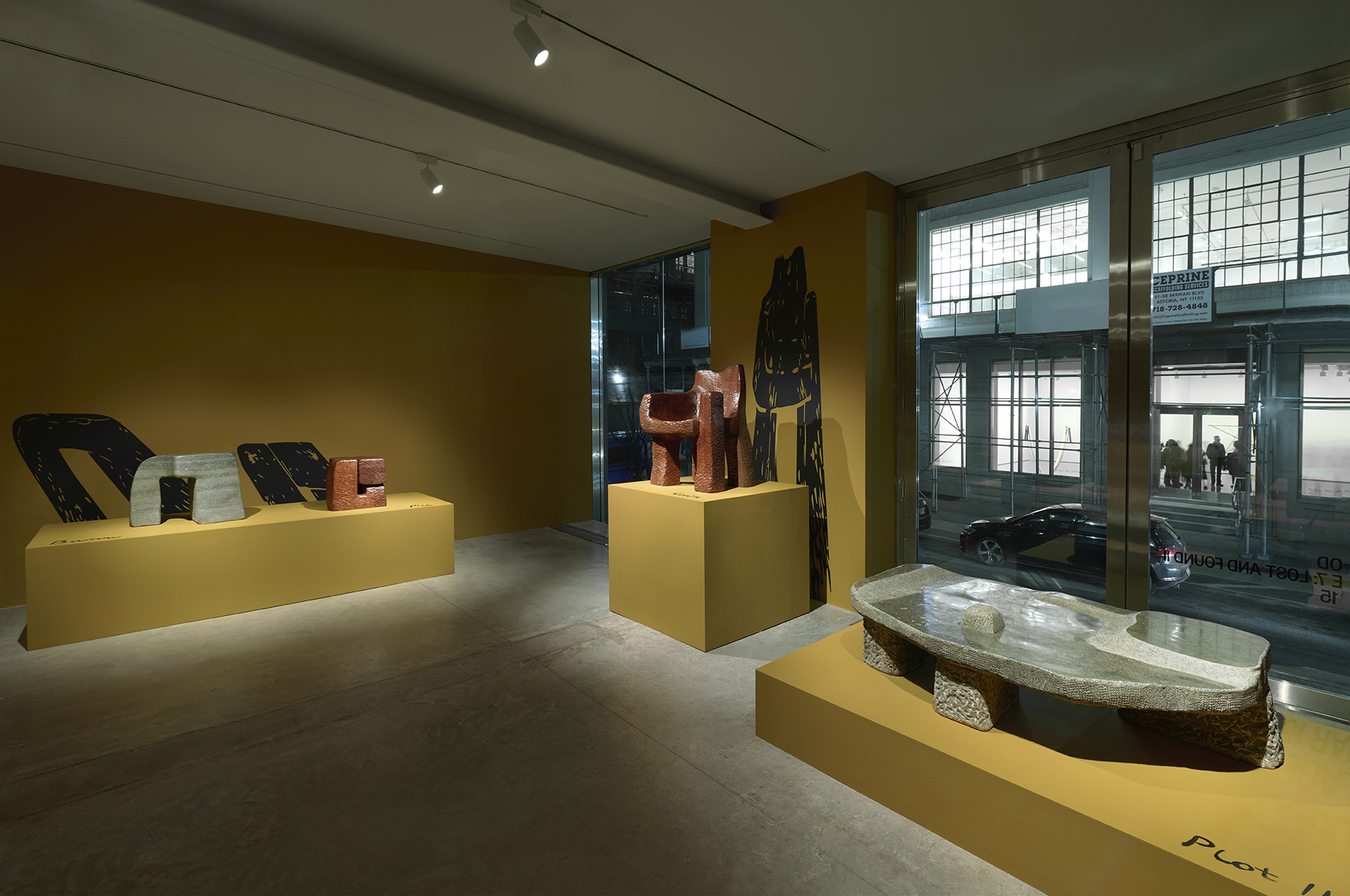
An installation view of ““Assemblage 7: Lost and Found II.” Photo: Izzy Leung. Courtesy of Friedman Benda and Faye Toogood
“I have this genuine desire to try to connect my work to humanity, nature, and the landscape,” Toogood said yesterday on a video call from her London apartment. She wore large black-framed glasses, an oversized cream sweatshirt, and a blue and green plaid scarf. She gesticulated excitedly as she talked.
“The Friedman Benda show is so much about digging down, trying to find these relics within the ground, trying to unearth something that’s always been there,” she said. “That feels reassuring, strong, and poetic. On the flip side, ‘Womanifesto!’ is essentially me realizing that after 20 years of working in design, I can now use emotion in a way that I never could. I’m just putting it all out there.”
“Assemblage 7: Lost and Found II” runs through March 15, and at first glance, is like stumbling into a history museum. It’s a chic Flintstones-goes-druid take on design. Toogood has transmuted chairs, benches, and dining and side tables into monolithic forms that often look like antiquarian finds. The functional sculptures have archaeological titles like Cairn, Hoard, and Lode. Toogood staged the pieces atop plinths, behind them are dramatic shadowlike lino-prints from the planning stages. The monochromatic scenography was painted “Toogood Earth No. BC3,” a bespoke Farrow & Ball hue based on watered-down mud sourced near her Hampshire home.
The exhibition is not all for the runes and Stonehenge set. “There’s also the 70s’ and clear references to JB Blunk,” Toogood noted. This New York outing is an expanded iteration of the show, previous stops of which included Los Angeles and the historic Chatsworth House in Derbyshire, England.
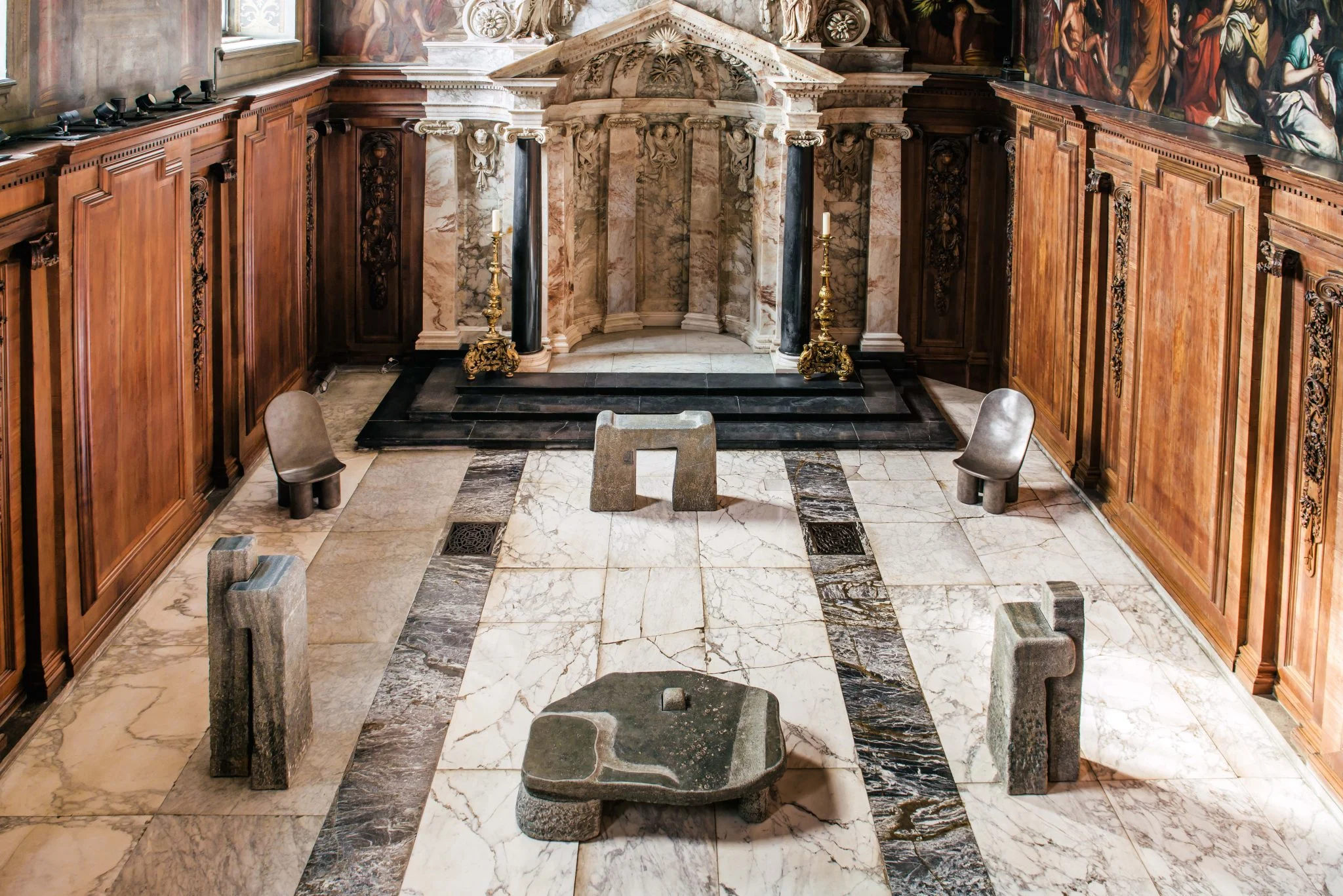
Installation view of Faye Toogood’s Assemblage 7 works at “Mirror Mirror: Reflections on Design at Chatsworth” Photo: Genevieve Lutkin. Courtesy of Chatsworth, Friedman Benda, and Faye Toogood
Toogood graduated from University of Bristol in 1998 with a degree in art history and studied fine art. “I was adamant that I was going to be a sculptor,” she recalled. Looking back, she doesn’t see any masterpieces in her college oeuvre. “They were shit,” she said of her sculptures. “I was a really active feminist and they were kind of tortured. I was in my early twenties. They were very dark, full of melancholy. It was the nineties. Nothing poetic about it.”
After university, the real world loomed. “I had absolutely no idea what I was going to do,” Toogood said. “I ended up working at the World of Interiors magazine because they were a bunch of art school dropouts, and that led to a mini career in journalism. But then it became very clear after a few years that I had to go back to making things. So, I just feel like, weirdly, the career has just been circling back to what I should have done in the first place, a really long way going round, coming back to sculpture.”
For “Assemblage 7: Lost and Found II,” Toogood focused on materials that were integral to her narrative-heavy project. “Purbeck marble is not actually marble, in fact it’s a limestone,” she explained. “It comes from one single small quarry which has been in the same family for hundreds of years off the Dorsett coast here in the UK. It’s normally used in ecclesiastical buildings. It’s not normally a stone used in domestic interiors.” Some of the pieces have barely perceptible fossils that have been revealed within the carved stone. “It feels so ancient, but at the same time quite spiritual,” she continued.
Most of the wooden pieces are English oak. “They have this shellac finish which is normally used in fine 18th century furniture,” she explained. “The shellac makes them have more of that historical reference. It looks so different without that finish, the natural raw wood doesn’t have the same kind of potency.” There are also two Bog Oak pieces in the exhibition in New York. “It blows your mind to know you’re working with Bog Oak that’s hundreds of thousands of years old!” Toogood enthused. Packed into this collection are fossil record and geological processes—these natural forces, layered with human craftsmanship, create a powerful dialogue.
Toogood said the work considers the process of aging. “I guess [I mean] my aging, the world aging. But also preservation, and the beauty of age and patina. Some of the pieces with all the chisel work feel like they’ve been bashed by the elements and they’re still standing and they’re monumental.” They’re also about perseverance and strength.
For all of its sloganeering, the Maison & Objet presentation “Womanifesto!” reveals the softer side of Toogood—literally as there are cushioned couches and chairs to go with her different perspective on modernism. It begins with a void, all-black furniture set in a black room. “I’m so excited about using black again,” she said. “The black room is the full stop. Everything’s about to change. Let’s just go back to black. That area was a reset, the need for more abstraction.”
What follows is Toogood’s earthy (and dare I say cozy) assemblage set against a gorgeous backdrop that she painted herself. It would be suitable for a diorama at a natural history museum. That massive landscape was a departure. “It was more me saying I finally wish to express myself in that way that,” she explained. “I had been holding back this element of decoration, the drawing, the painting these so-called stereotypical feminine attributes within design.”
She paused and added, “Twenty years ago when I started in design, it was a sea of steel and bronze and heavy-weight materials. Do I use anything textile or ceramic or even remotely decorative?”
